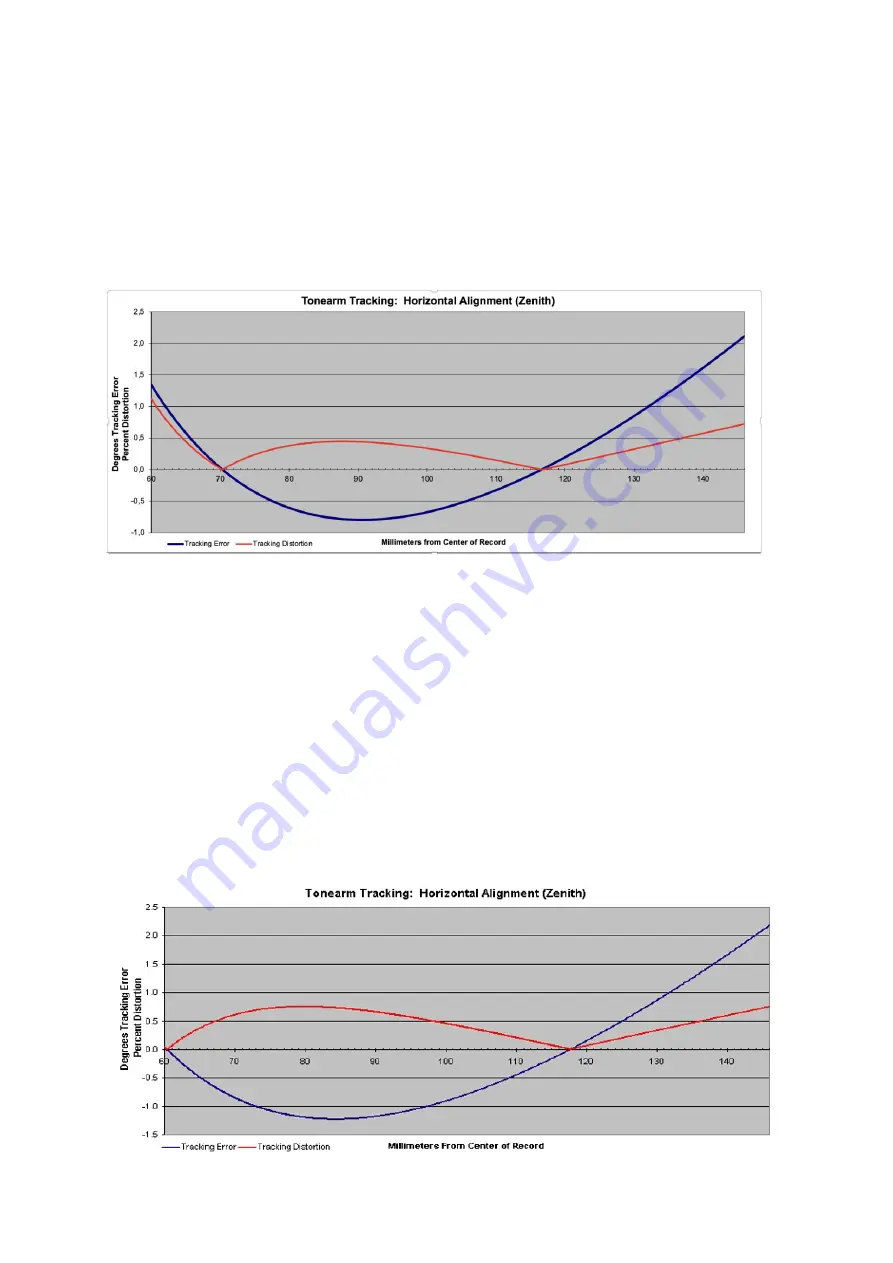
© Pro-ject Audio Systems · Pro-Ject Align it DS3· Revision 2022.10.14
7
Löfgren B (null points 70,3 and 116,6mm)
Minimizes distortion in the area between the null-points, resulting in the lowest average distortion at the
expense of slightly higher distortion at the start and the end of the record. Compared to Baerwald you’ll have
more accurate tracking between the null-points, but less accurate tracking and more distortion at the very
beginning and very end of the record. We recommend this for modern jazz, pop and rock records where
there is less musical content on each side (less than 20 minutes) so only two thirds of the record are covered
by grooves, and the most important songs are typically found between the null-points. Null-points at 70,3
and 116,6mm, both are shifted more towards the middle of the record to optimize this area for playback.
Here we can see the same condition as before, but the geometry is Löfgren B. Because the inner null point is
shifted more from the centre, we got a more considerable tracking error at the end of the record and, with it,
related distortion higher. But the integration of the distortion on the whole record will be lower than in the
previous case.
Stevenson (null points 60,3 and 117,4mm)
A variation which is optimized for lower distortion at the inner grooves, by moving the inner null-point more
towards the inside. In classical music the closing big climaxes occur exactly while the stylus is approaching
the end of the grooves (the most inner groove). This results in the biggest challenge for the cartridge, just as
the playback conditions are worst. Some records are close to the theoretical maximum of 25 minutes, and if
done carelessly even longer and the grooves are covering the record up to the innermost part. This is true for
classical music, operas, live concerts, where a piece of music is so long that it is difficult to get it on one side
and you want to avoid a cut and putting the rest on the next side. Null-points at 60,3 and 117,4 mm,
meaning also the outer point is pushed outside, towards the beginning of the record, resulting in less
tracking error and distortion at the very beginning of the record.



























